
Parakeet Breeding Behavior:
So, you’ve got a pair of parakeets, and suddenly, one is acting extra flirty while the other looks slightly confused. Congratulations! You might be witnessing the early stages of parakeet breeding behavior. But what exactly happens when these little birds decide to start a family? Let’s break it down.
Love is in the Air – Or at Least in the Cage
Parakeets don’t swipe right on a dating app, but they do have their own way of wooing each other. The male parakeet will often bob his head enthusiastically, chirp sweet nothings, and even regurgitate food for his chosen mate. Yes, nothing says “I love you” in the bird world like partially digested seeds.
The Art of Courtship
Once the female shows interest (which might take some time – she has high standards), the male will show off his best tricks. Expect more singing, wing flapping, and an over-the-top display of affection. If she’s into it, she’ll return the favor by preening him. Think of it as a parakeet spa day—a little grooming, a little relaxation, and a lot of bonding.
Time to Nest
If the romance goes well, the female will start looking for a suitable place to lay her eggs. This is where things get serious. A proper nesting box is a must if you want successful parakeet breeding. She’ll get extra focused, inspecting the box, moving around materials, and making it cozy. It’s basically extreme home makeover: parakeet edition.
Egg-laying and Incubation
After all the flirting and nesting, the female will lay eggs – usually about 4-6. She’ll sit on them for around 18 days, keeping them warm while the male plays the role of doting dad, bringing food and standing guard like a tiny feathery knight.
Baby Parakeets Arrive!
Once the eggs hatch, you’ll have a nest full of tiny, helpless chicks that look more like mini dinosaurs than birds. But don’t worry, they grow fast! The parents take turns feeding them, and within a few weeks, the chicks will start developing feathers and testing their wings.
Final Thoughts
Watching parakeet breeding unfold is both fascinating and adorable. If you’re hoping to breed parakeets, be patient, provide a good environment, and let nature take its course. And remember, true love in the bird world is all about head-bobbing, loud singing, and sharing a pre-chewed meal. Romantic, isn’t it?
Optimal Nesting Materials for Parakeets
So, your parakeets have decided it’s time to settle down and start a family. Exciting, right? But before they start their parakeet breeding adventure, they need the perfect nesting setup. After all, no one wants to raise babies in an uncomfortable home – even birds have standards!
1. The Gold Standard: Aspen Shavings
If parakeets had a favorite interior designer, they’d probably recommend aspen shavings. These shavings are soft, absorbent, and free from harmful oils that can be found in pine or cedar. Plus, they don’t smell like a chemical experiment gone wrong.
2. Paper – The Budget-Friendly Option
Parakeets love shredding things, so why not give them something useful to tear up? Plain, non-toxic paper is a great choice. Just avoid anything with ink, because while reading the newspaper is educational for us, it’s not ideal for parakeet bedding.
3. Coconut Fiber – The Exotic Choice
Want to give your birds a tropical vibe? Coconut fiber is soft, natural, and excellent for insulation. It’s like giving your parakeets a mini beach house, minus the tiny sunglasses and beach towels.
4. Untreated Hay or Straw
Some parakeets enjoy nesting in hay or straw, but make sure it’s clean and pesticide-free. Nobody wants their parakeet breeding experience to be ruined by sneezing fits or mysterious health issues.
5. Avoid These Mistakes!
- Pine & Cedar Shavings: Smells great to you, but can be toxic to birds.
- Fabric Scraps: Cute idea, but threads can tangle around tiny feet.
- Colored or Scented Paper: Your birds don’t need a lavender-scented nest.
Final Thoughts
Providing the right nesting materials makes a world of difference in your parakeet breeding journey. Keep it natural, safe, and cozy, and your birds will thank you – in their own chirpy way, of course! Now sit back and watch as they create their dream nursery (and probably throw half of the materials around just for fun).
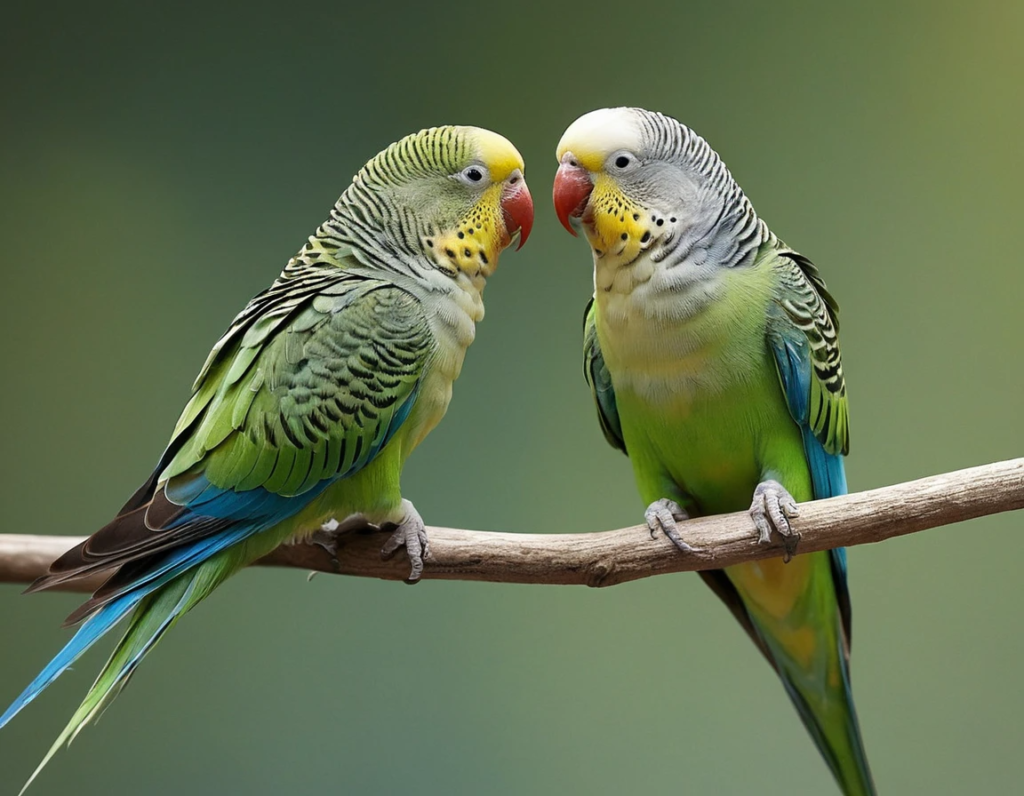
Ideal Nest Box Specifications:
So, your parakeets have decided they want to start a family. That means it’s time to roll out the red carpet and set up the ideal nest box. After all, no parakeet couple wants to raise their chicks in subpar real estate. Let’s go over the essentials to make sure your parakeet breeding setup is top-notch!
1. The Right Size – Because Tiny Homes Are Trendy
Your parakeet isn’t moving into a mansion, but they still need enough space to feel comfortable. An ideal nest box should be about 10 x 6 x 6 inches with a hole diameter of 1.5 inches. Too big, and your birds might feel lost. Too small, and, well, it’s like trying to fit into those jeans from high school – uncomfortable and impractical.
2. The Perfect Material – Wood, Not Plastic
Wooden nest boxes are the gold standard. They provide insulation, stability, and a natural feel. Avoid plastic or metal boxes – they can get too hot or cold, making your parakeet breeding process less than ideal. Think of it like picking between a cozy log cabin and a tin shed. Easy choice, right?
3. The Right Entrance – No Fancy Doors Needed
Parakeets like a simple setup, so a 1.5-inch round entrance hole is perfect. It allows them to get in and out comfortably while keeping unwanted visitors (like nosy house sparrows) away. A perch outside the entrance is optional, but it does make the whole experience feel more luxurious – kind of like a tiny front porch!
4. Ventilation & Drainage – Fresh Air Matters
A few small holes for ventilation will help keep things airy and prevent stuffiness. No one wants their nursery to feel like a sauna. Adding small drainage holes at the bottom will also help keep things dry in case of accidental spills or enthusiastic nest rearranging.
5. The Interior – Comfy & Safe
Line the bottom with a shallow indentation to prevent eggs from rolling around like marbles. Add a layer of aspen shavings or coconut fiber for a cozy and safe environment. Avoid cedar or pine, as they can release harmful oils. Remember, comfort is key for a successful parakeet breeding experience!
Final Thoughts
Building the perfect nest box is all about size, comfort, and safety. Give your parakeets a well-designed space, and they’ll be more than happy to start their little family. And hey, if you get it just right, maybe they’ll even name one of their chicks after you – or at least chirp a thank you in their own way!
Recognizing Signs of Nesting Behavior
So, you’ve noticed your parakeet acting a little… different. Is it a mood swing, a new personality trait, or are they getting ready for parakeet breeding? Knowing the signs of nesting behavior can help you prepare for the tiny, chirping surprises that may be on the way.
1. Increased Nesting Activity – DIY Home Projects Begin
If your parakeet is suddenly obsessed with organizing its space, congratulations! You have a feathery interior designer in the making. Female parakeets, in particular, start exploring nesting boxes, chewing on wood, and arranging materials like a perfectionist arranging throw pillows.
2. Shredding Everything in Sight
Is your bird tearing paper, feathers, or even your favorite book? Don’t panic – they’re not rebelling against literature. This is a classic parakeet breeding sign. They instinctively shred materials to create a cozy nest. Just be sure to offer safe nesting materials unless you want your shopping receipts turned into parakeet bedding.
3. Cuddly and Territorial – Mood Swings Incoming
Your once social parakeet may suddenly get a bit moody. Some become extra affectionate with their mates, while others turn into tiny feathered security guards, protecting their nest box like it’s the crown jewels. If your bird starts side-eyeing you when you get too close, take the hint!
4. Increased Bonding Between Mates
If you have a pair, you may notice extra cuddling, preening, and adorable beak-touching. It’s like watching a romantic movie – except with more chirping. These affectionate moments are essential for parakeet breeding, strengthening the bond before eggs arrive.
5. Egg Laying – The Ultimate Sign
If your parakeet lays an egg, well, mystery solved! Even if there’s no male around, some females lay unfertilized eggs due to hormonal changes. Make sure she has enough calcium (like cuttlebone) to stay healthy during this process.
Final Thoughts
Recognizing nesting behavior is key to ensuring a smooth parakeet breeding experience. Keep an eye out for shredding, mood swings, and territorial behavior. If your parakeet is acting like an overzealous interior decorator, chances are, she’s getting ready for a new feathery addition to the family. Just be prepared – once the chicks arrive, you might have to put up with some sleepless nights… of non-stop chirping!
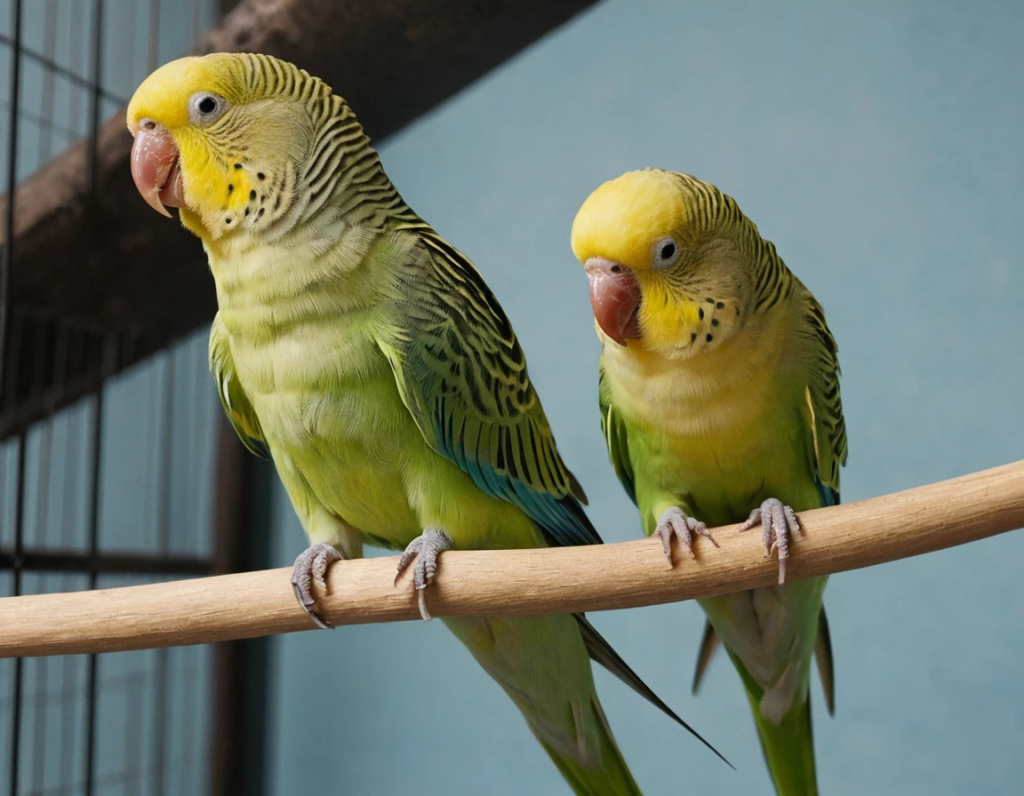
Parakeet Egg Laying and Incubation
So, your parakeet has been acting a little different lately—shredding paper like it’s on a mission, spending more time in the nest box, and maybe even throwing a few judgmental looks your way. If you’re seeing these signs, your feathered friend might be gearing up for parakeet breeding success!
1. The Egg-Laying Process – Surprise, You’re a Bird Grandparent!
Once a female parakeet is ready, she’ll lay an egg every other day until she completes her clutch, which usually consists of 4-6 eggs. It’s a bit like a slow-motion Easter egg hunt, but without the chocolate. Don’t be alarmed if she ignores the first egg; she’ll typically start incubating once she’s laid at least two.
2. Nesting Behavior – Serious Mom Mode Activated
During this time, the female becomes the queen of the nest. She’ll stay inside for long periods, only coming out for food, water, and possibly to give you the “Do Not Disturb” look. The male, meanwhile, plays the role of a doting partner—bringing her food and nervously pacing like a first-time dad in a hospital waiting room.
3. Incubation Period – The Waiting Game
After the last egg is laid, incubation begins. This period lasts 17-20 days, during which the female will keep the eggs warm while the male continues his snack-delivery service. If you were hoping for some action-packed bird drama, think again—this is mostly a time of patience.
4. Hatching – Tiny Chirping Dinosaurs Appear
Once the eggs start hatching, the real excitement begins! Chicks usually hatch in the order they were laid, meaning you might have one or two very tiny, naked, and slightly awkward-looking babies at first. But don’t worry, they fluff up pretty quickly.
5. Helping Without Hovering
While it’s tempting to check in frequently, too much disturbance can stress the parents. Just make sure they have plenty of food, calcium (like a cuttlebone), and fresh water. Keep an eye on the mother’s health—laying eggs takes a toll, and she’ll need extra nutrients.
Final Thoughts
Egg-laying and incubation are natural parts of parakeet breeding, and with a little patience, you’ll soon have a nest full of chirping little fluff balls. Give the parents space, provide proper nutrition, and before you know it, you’ll be witnessing the cutest family moments in the bird world. Just be prepared—baby parakeets have an appetite that rivals a teenager’s!
Dietary Needs During Breeding Season:
When it comes to parakeet breeding, diet plays a crucial role in ensuring a successful and healthy clutch. Just like humans need a balanced diet (and maybe a little extra chocolate) during pregnancy, parakeets need a nutritious and varied diet to support egg-laying and chick-rearing. So, what’s on the menu for these feathered parents-to-be?
1. Protein Power – The Ultimate Energy Booster
Parakeets need extra protein during the breeding season to support egg production and chick growth. You can offer them boiled eggs (yes, birds eating eggs—it’s a little weird, but trust the process), cooked legumes, or high-quality pellets. The male will also benefit from the extra protein, giving him the strength to play his role as an overenthusiastic food delivery service.
2. Calcium – Strong Eggs, Strong Bones
Egg production can drain calcium from the female’s body, which can lead to weak eggshells and health issues. To prevent this, offer cuttlebone, crushed eggshells, or calcium-rich leafy greens like kale and spinach. No one wants a weak eggshell situation—think of it as ensuring her “building materials” are top quality!
3. Fresh Fruits and Veggies – The Colorful Buffet
A variety of fresh fruits and vegetables keep parakeets in top shape. Offer options like carrots, apples, broccoli, and bell peppers. These provide essential vitamins, plus, watching a parakeet nibble on a tiny broccoli floret is pure entertainment. Just avoid avocados and onions—those are a big no-no for birds!
4. Healthy Grains and Seeds – The Perfect Balance
Seeds are a staple in any parakeet’s diet, but during parakeet breeding, they should be supplemented with sprouted seeds, whole grains, and millet. Sprouted seeds are especially nutritious, packed with extra vitamins and enzymes. Think of them as the parakeet version of a trendy health smoothie.
5. Hydration – The Overlooked Essential
Breeding and raising chicks is hard work, and hydration is key. Make sure your parakeets always have access to fresh, clean water. You can even offer electrolyte solutions (bird-safe, of course) to keep them extra hydrated.
Final Thoughts
During the parakeet breeding season, nutrition is everything. A well-balanced diet ensures healthy eggs, strong chicks, and happy parents. Keep things varied, fresh, and nutritious, and soon you’ll have a bustling little bird nursery filled with adorable chirps. Just be prepared—once those chicks hatch, their appetite will rival that of a growing teenager!
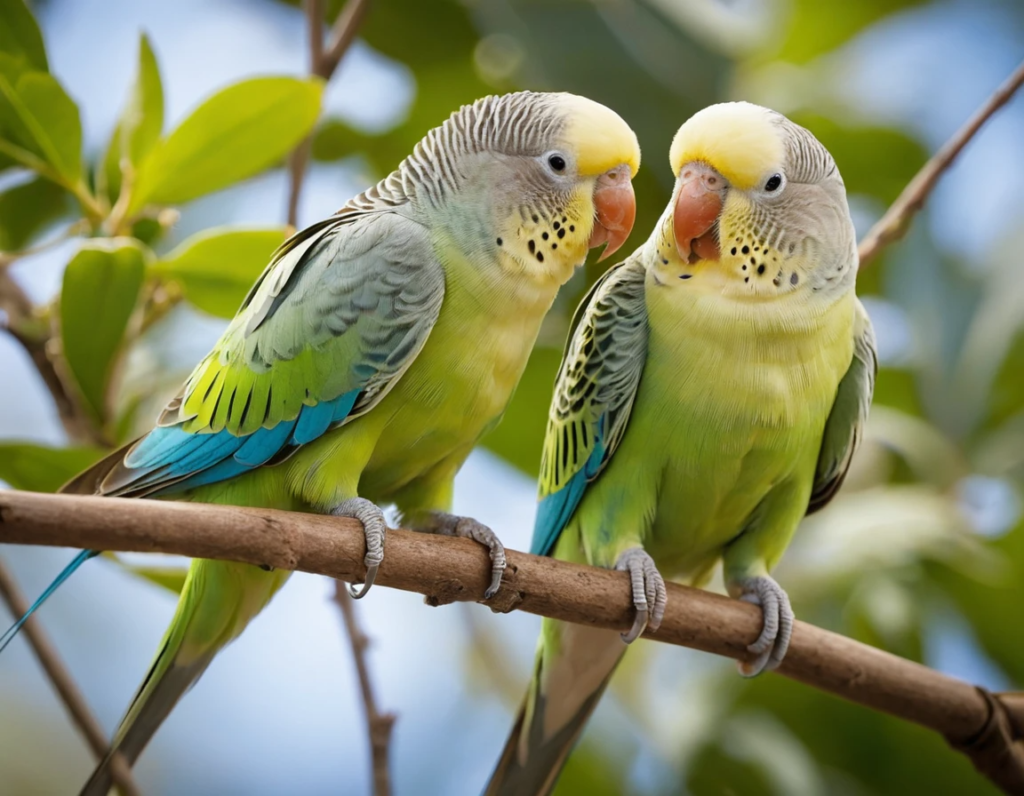
Managing Aggression in Nesting Parakeets:
So, your usually sweet and chirpy parakeet has turned into a tiny, feathered warrior? Don’t take it personally—aggression is a common part of parakeet breeding, and it’s usually just their way of protecting their nest. But, let’s be honest, nobody wants a parakeet with attitude issues. Let’s figure out how to keep things peaceful while still supporting their natural instincts.
1. Understand Why the Feathers Are Flying
During parakeet breeding, aggression is usually caused by hormones, territorial behavior, or an overcrowded cage. A nesting female, in particular, can go from a cuddly companion to a full-on security guard if she feels her nest is being threatened.
2. Give Them Some Space – No One Likes a Nosy Neighbor
If your parakeets are acting out, try giving them more room. A larger cage or a separate breeding area can reduce territorial fights. Think of it like giving a cranky person their own room—it works wonders for everyone’s sanity.
3. Reduce Competition – Sharing Is Not Always Caring
Too many birds in one space can cause stress, leading to pecking and fights. If you have multiple pairs, make sure each one has its own nesting box and enough distance to feel secure. You wouldn’t want to live in a house with zero privacy, would you?
4. Keep Hands to Yourself (For Now)
Your parakeets may love your attention, but during nesting season, they might see your hand as an unwelcome intruder. Minimize handling and only check the nest when necessary. No one likes being interrupted when they’re setting up their dream nursery!
5. Distract With Food and Toys
A well-fed, entertained parakeet is a less aggressive parakeet. Offer plenty of fresh food, millet, and toys to keep their minds occupied. It’s hard to pick fights when you’re busy munching on a delicious treat!
6. Monitor for Bullies
Sometimes, one parakeet turns into the neighborhood troublemaker, harassing others constantly. If one bird is being overly aggressive, consider separating them for a while to let everyone cool down.
Final Thoughts
Aggression during parakeet breeding is natural, but it doesn’t have to turn your aviary into a battlefield. By giving your birds enough space, reducing stress, and keeping them well-fed and entertained, you can help maintain harmony in the birdhouse. And remember—sometimes, even parakeets just need a little personal space!
Common Nesting Challenges and Solutions:
Parakeet nesting sounds simple—just give them a cozy box, and nature takes care of the rest, right? Well, not always. Sometimes, parakeet breeding comes with unexpected hiccups, from eggs that never hatch to territorial tantrums. But don’t worry! Here’s how to tackle common nesting challenges and keep your birds happy.
- Eggs Not Hatching – The Mystery of the Infertile Egg
If your parakeet lays eggs but nothing happens, there could be a few reasons. Maybe the eggs weren’t fertilized (sorry, dad!), or the conditions weren’t ideal for incubation. Solution:
- Make sure the breeding pair is bonded and actually mating (awkward, but important!).
- Provide proper nutrition, especially calcium, to support healthy egg development.
- Avoid disturbing the nest too often—parakeet moms like their privacy!
- Parents Ignoring Their Eggs – Not-So-Maternal Instincts
Some parakeets lay eggs and then decide parenting isn’t for them. It’s frustrating, but it happens. Solution:
- If the female abandons the eggs early on, you might need to incubate them artificially (if you’re up for the challenge).
- Ensure the nest box is in a quiet, safe location to encourage a sense of security.
- If this keeps happening, the pair may not be the best match for parakeet breeding—sometimes, personalities just clash!
- Fighting in the Nest – When Things Get Too Feisty
Aggression in the nesting area can turn a peaceful home into a feathery feud. Whether it’s the parents squabbling or an overly curious neighbor, fighting can stress out the mother and harm the eggs. Solution:
- Ensure each pair has its own nesting space—no one likes an uninvited guest in their nursery.
- If one bird is being a bully, separate them before things escalate.
- Provide plenty of food and entertainment to reduce tension—boredom can make birds cranky!
- Chicks Not Being Fed – Parakeet Parenting 101 Fail
Sometimes, parakeet parents forget (or refuse) to feed their chicks. This can be life-threatening for the little ones. Solution:
- Monitor the nest closely—if the chicks aren’t being fed, you may need to step in with hand-feeding.
- Make sure the parents have enough high-protein food to encourage feeding behavior.
- If neglect happens repeatedly, you might need to reconsider using that pair for parakeet breeding in the future.
Final Thoughts
Nesting challenges can be stressful, but with patience and a little problem-solving, you can help your parakeets become successful parents. Pay attention to their needs, step in when necessary, and remember—sometimes, even birds need a little help figuring out family life!
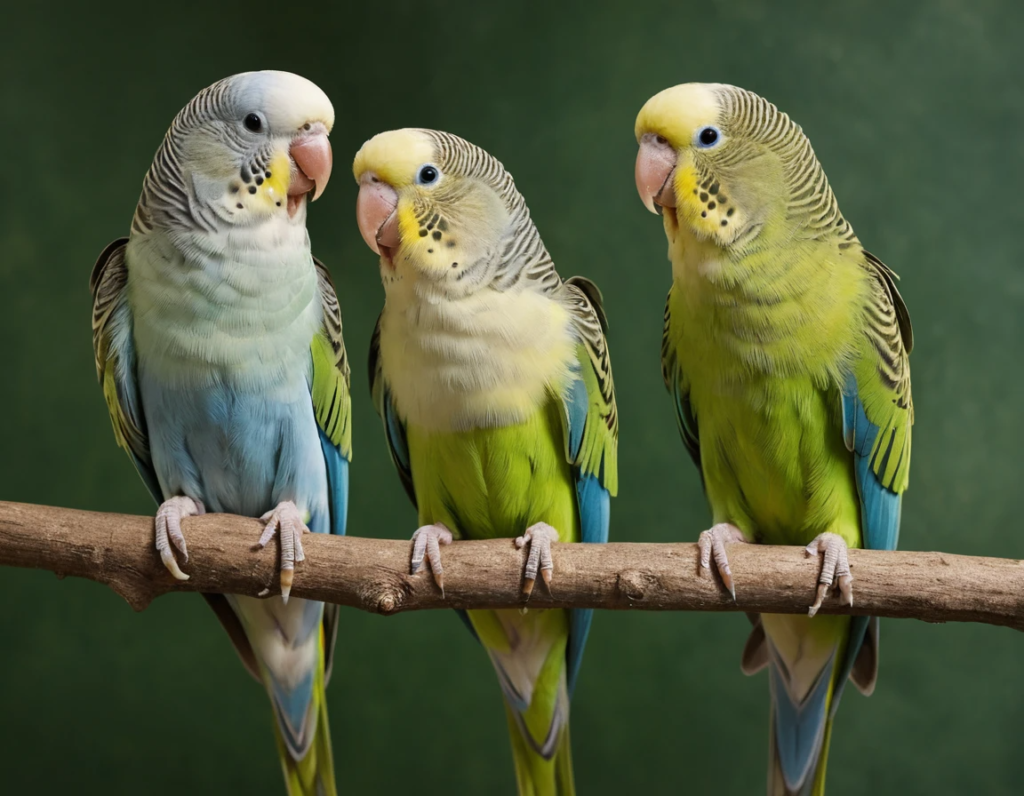
Timing and Frequency of Breeding Cycles:
If you’ve ever wondered how often your parakeets can start a family, you’re not alone! Parakeet breeding isn’t just about love and feathers—it’s about understanding their natural rhythms and making sure they don’t overdo it. After all, even birds need a break!
How Often Do Parakeets Breed?
Parakeets can breed multiple times a year, but that doesn’t mean they should. In ideal conditions, they can have two to three clutches per year. Any more than that, and you’re looking at some seriously exhausted parents.
Solution:
- Give your birds a break between clutches so they can regain their strength.
- Remove the nesting box after a successful breeding cycle to prevent back-to-back clutches.
- Monitor their health—parenting is tough work, even for parakeets!
Best Time of Year for Parakeet Breeding
Parakeets prefer to breed in warmer months, typically spring and early summer, when food is plentiful, and daylight hours are longer. Think of it as their version of the perfect romantic getaway!
Solution:
- Ensure they have a proper light cycle—12-14 hours of daylight encourages breeding.
- Maintain a comfortable temperature (around 65-75°F) to keep them cozy and in the mood.
- Keep stress levels low—loud noises and frequent disruptions can ruin the mood faster than a bad dinner date!
Recognizing When They’re Ready
You’ll know your parakeets are ready when they start displaying courtship behaviors—chirping sweet nothings, regurgitating food (yes, that’s a love language in the bird world), and spending more time in the nesting box.
Solution:
- Provide a well-placed nest box to give them a sense of security.
- Offer high-protein foods like boiled eggs and sprouted seeds to keep them energized.
- Let them do their thing—nature knows best!
When to Hit the Pause Button
While parakeet breeding is exciting, too much of it can take a toll on their health. If your pair seems tired, their feathers look ruffled, or they’re producing weak eggs, it’s time for a break.
Solution:
- Remove the nest box and let them rest for a few months.
- Provide a nutrient-rich diet to help them recover.
- Keep an eye on their energy levels—happy, healthy birds make better parents in the long run!
Final Thoughts
Understanding the timing and frequency of breeding cycles helps ensure your parakeets stay happy and healthy. Give them the right conditions, know when to encourage breeding, and when to hit pause. With a little balance, your parakeets will have the best chance at raising strong, chirpy chicks—without completely wearing themselves out!
Post-Hatching Care for Chicks:
So, your parakeet breeding efforts have paid off, and now you have a few tiny, bald, and slightly awkward-looking chicks in the nest. Congratulations! But what happens next? These fragile little fluff balls need proper care to grow into strong, chirpy parakeets. Let’s break down everything you need to know about post-hatching care—without overcomplicating it!
Let the Parents Do Their Job
In most cases, the parent parakeets are natural-born caregivers. The mother will keep the chicks warm, while the father plays food delivery guy. Your job? Mostly to sit back and watch (while resisting the urge to interfere too much!).
Solution:
- Avoid handling the chicks in the first few days unless absolutely necessary.
- Make sure both parents have enough food to keep up with their new responsibilities.
- Keep their environment calm—no loud noises or sudden movements. Think of it as a bird maternity ward!
Nutrition – The Key to Strong Chicks
Baby parakeets rely on their parents for food, which means the parents need a nutrient-rich diet to produce high-quality crop milk. A well-fed parent means well-fed chicks!
Solution:
- Provide a mix of soft foods like boiled eggs, sprouted seeds, and fresh vegetables.
- Add calcium sources like cuttlebone to support the mother’s health.
- Keep their water fresh—hydration is just as important as food.
Monitoring Chick Development
Parakeet chicks grow fast! In just a few days, they’ll start to develop down feathers, and by three weeks, they’ll be covered in colorful plumage. But sometimes, problems arise, and it’s good to keep an eye on them.
Solution:
- Check daily to ensure all chicks are getting fed—if one seems weaker or smaller, intervention might be needed.
- If a chick gets pushed out of the nest, gently place it back.
- Watch for signs of sickness like inactivity, swollen bellies, or abnormal droppings.
When to Start Handling the Chicks
At around two to three weeks old, you can start gently handling the chicks to help them get used to humans. This is the perfect time to bond with them and ensure they grow into friendly, social birds.
Solution:
- Start with short, gentle handling sessions to avoid stressing them out.
- Let them perch on your finger once they start moving around.
- Keep handling positive—talk to them in a soft voice and reward them with gentle strokes.
Preparing for the Big Move
By five to six weeks old, the chicks will start leaving the nest and learning to eat on their own. This is the transition period before full independence.
Solution:
- Provide a shallow dish with soft foods to encourage self-feeding.
- Keep an eye on their weight—healthy chicks should look plump, not skinny.
- Ensure they have plenty of space to stretch their wings as they get ready for flight.
Final Thoughts
Post-hatching care is all about balance—giving your birds the right support while letting nature do its thing. With proper parakeet breeding care, you’ll soon have a nest full of energetic, chirping youngsters ready to explore their world. Just be ready—once they start flying, your peaceful bird cage will turn into a lively playground!
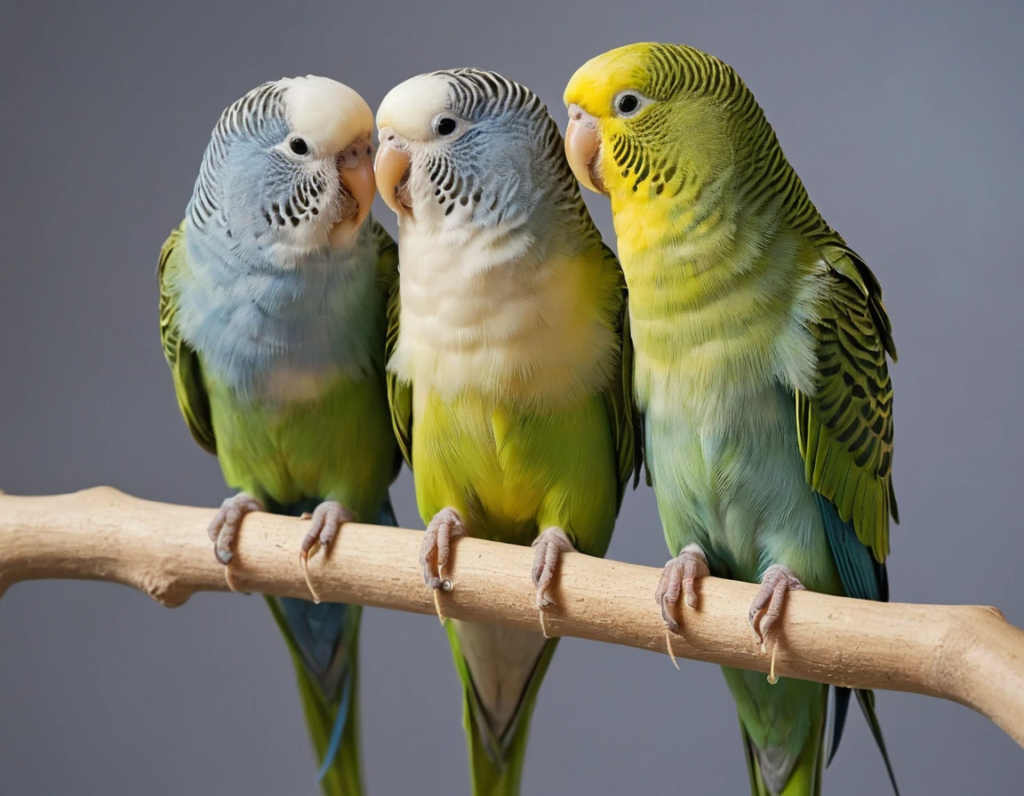
About Parakeet Breeding FAQs:
At what age can parakeets start breeding?
- Parakeets can start breeding at around 6-12 months old, but it’s best to wait until they are at least 1 year old for healthier chicks.
How do I know if my parakeets are ready to breed?
- Signs include courtship behavior like feeding each other, chirping sweetly, and spending time near the nesting box.
How often do parakeets breed in a year?
- Parakeets can breed 2-3 times per year, but they need breaks between clutches to stay healthy.
Do I need a special nesting box for breeding?
- Yes! A proper wooden nesting box with a concave bottom helps prevent eggs from rolling around.
Can I breed parakeets in a regular cage?
- You’ll need a spacious breeding cage with enough room for the pair and the chicks once they hatch.
Parakeet Mating and Nesting
Do parakeets mate for life?
- Not necessarily, but once they bond, they tend to stay together unless separated or incompatible.
What should I feed my parakeets during breeding?
- Offer a high-protein diet including boiled eggs, sprouted seeds, and cuttlebone for calcium.
How long does it take for eggs to hatch?
- It usually takes about 18-21 days after the female lays the eggs.
How many eggs does a parakeet lay at a time?
- A clutch usually consists of 4-6 eggs, laid one every other day.
Do both parents care for the eggs and chicks?
- The female incubates the eggs, while the male feeds her and later helps feed the chicks.
Egg and Chick Care
What if the eggs don’t hatch?
- Infertile eggs are common. If none hatch after 25 days, remove them to encourage the parents to rest.
Should I handle the eggs?
- It’s best to avoid touching the eggs, but you can candle them (shine a light through) after a few days to check for development.
What if the parents stop feeding the chicks?
- If chicks are abandoned, you may need to hand-feed them with a special parakeet baby formula.
When do baby parakeets open their eyes?
- Around 7-10 days old.
When do baby parakeets start growing feathers?
- Around 2-3 weeks old, they begin developing their first feathers.
Weaning and Post-Breeding Care
When do baby parakeets leave the nest?
- They usually start venturing out at 4-5 weeks old and are fully weaned by 6-8 weeks old.
How do I help chicks transition to solid food?
- Place soft foods like mashed veggies and millet near them to encourage pecking.
Should I separate the chicks from the parents?
- Once they are eating on their own (about 6-8 weeks), they can be moved to a separate cage.
Can siblings breed with each other?
- Yes, but it’s not recommended as inbreeding can cause genetic defects.
How do I prevent my parakeets from breeding too much?
- Remove the nesting box and reduce daylight hours to discourage breeding behavior.

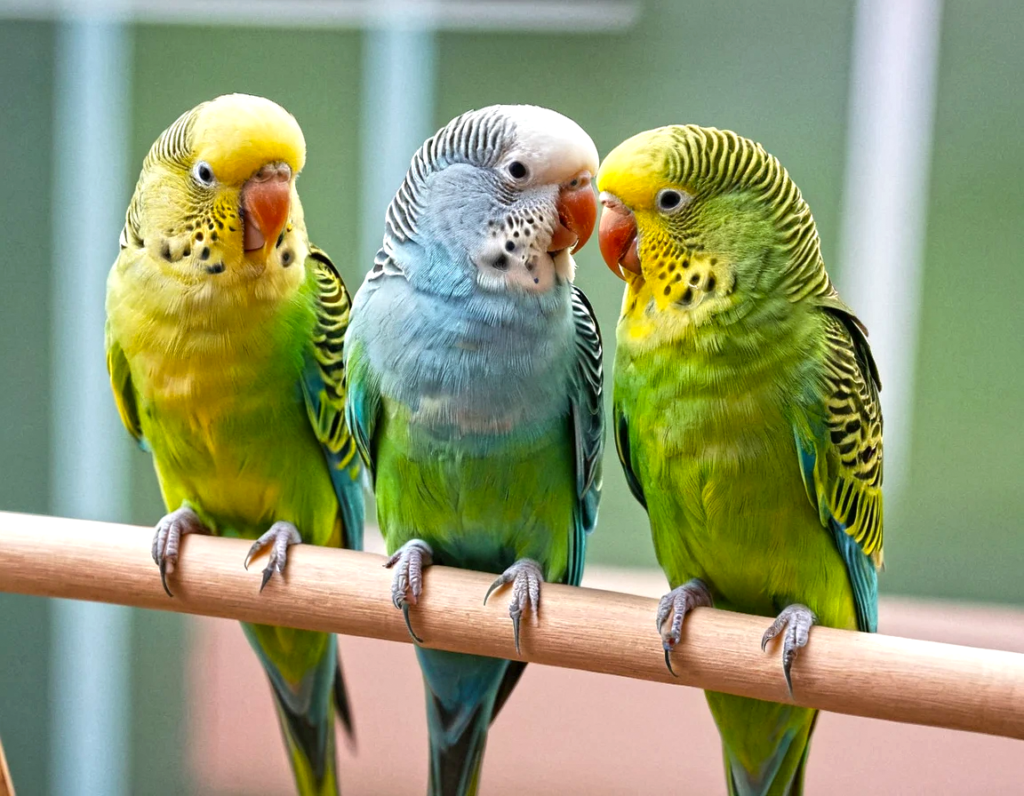
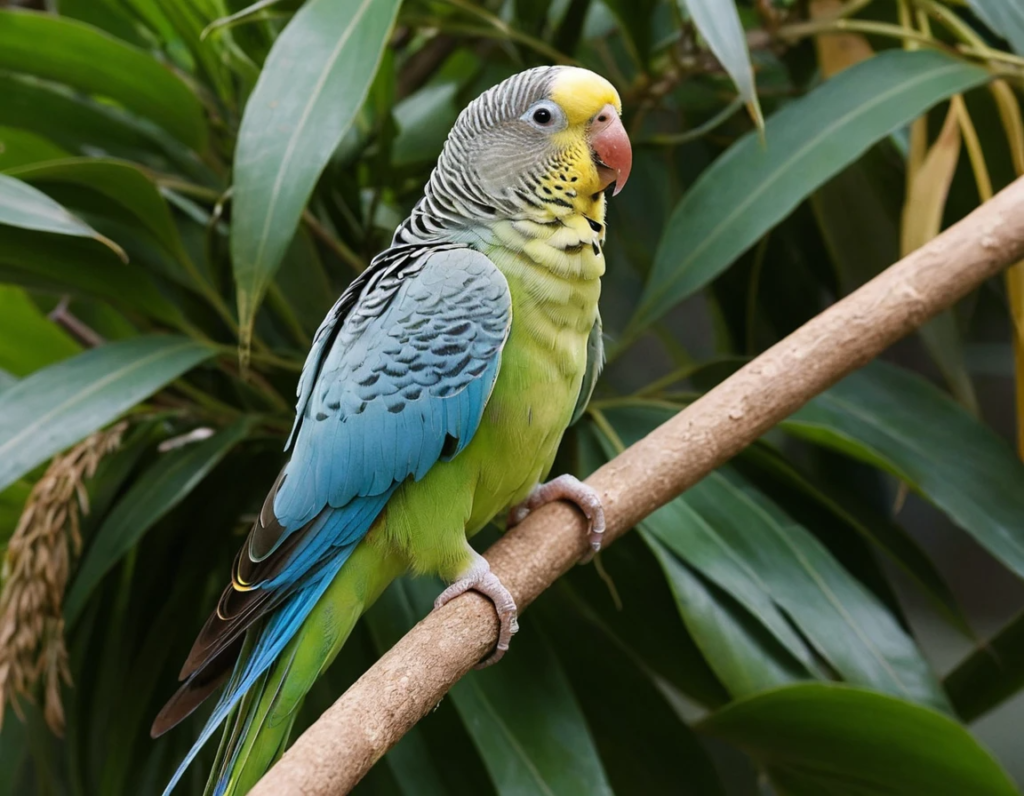
It’s not my first time to pay a visit this web
site, i am visiting this web page dailly and take pleasant facts
from here everyday.